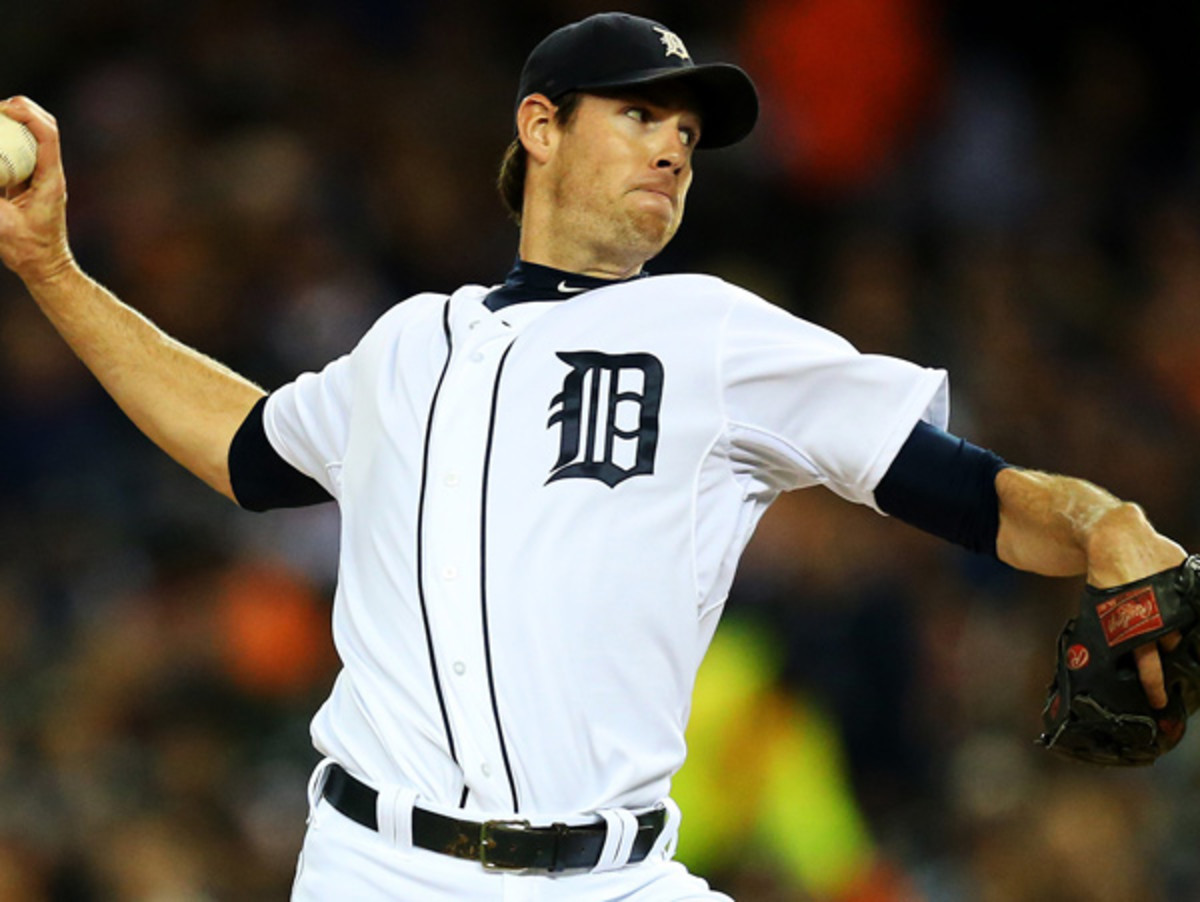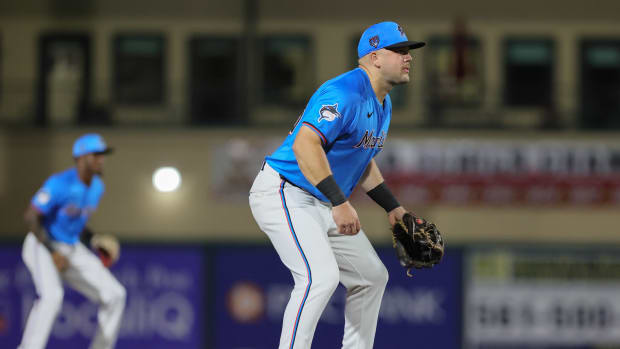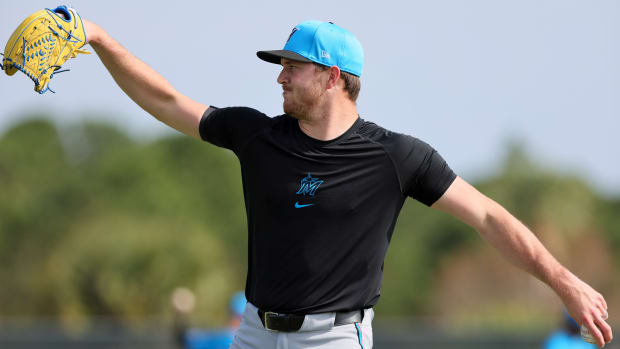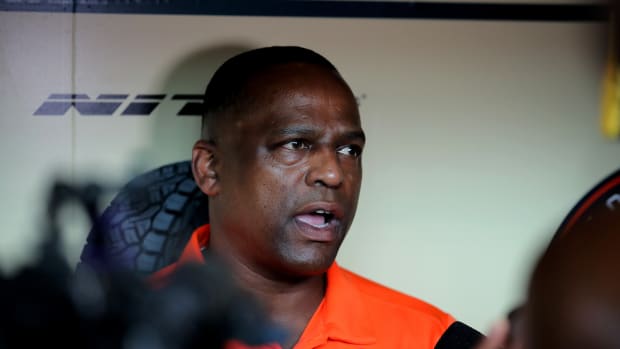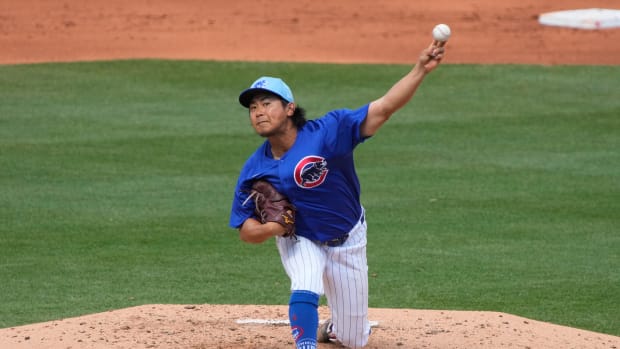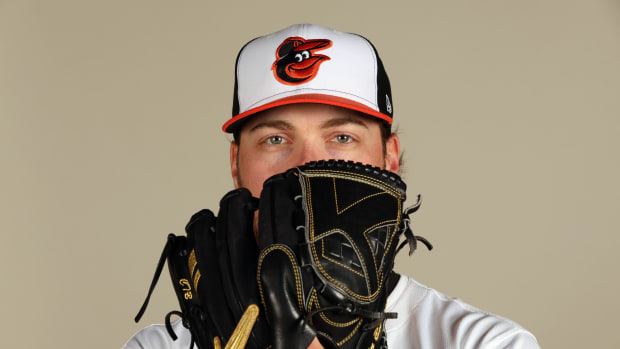Nationals upgrade rotation by acquiring Doug Fister from Tigers
Doug Fister was sent to the Nationals for a trio of players by the Tigers. (Ronald Martinez/Getty Images)
The Nationals didn't necessarily need an upgrade in their starting rotation given their strong top three of Jordan Zimmermann, Stephen Strasburg, and Gio Gonzalez, the expected return of Ross Detwiler from a back injury, and the solid major-league debuts this past season of Taylor Jordan and Tanner Roark. But the deal they just swung with the Tigers for Doug Fister may have been too good to pass up. The Nationals added Fister—who will continue to be among the best fourth starters in baseball having come from a rotation that also included Justin Verlander, Max Scherzer, and Anibal Sanchez—for pitching prospect Robbie Ray, lefty reliever Ian Krol, and utility man Steve Lombardozzi. Of those three, Ray, a 22-year-old lefty starter who finished 2013 in Double-A, is the key player heading to Detroit.
Krol, who is just five months older than Ray, throws in the mid-90s with a curve and change, didn't allow a run in his first nine major-league appearances, and held lefties to a .220/.273/.320 line in 56 plate appearances this past season. However, once that scoreless streak was snapped, the runs just kept coming. Over his final 23 appearances this season, Krol posted a 6.11 ERA with lousy peripherals and allowed seven of eight inherited runners to score. Righties hit .304/.350/.607 against him on the season.
Lombardozzi, 25, is a weak-hitting second baseman-turned-utility man who would have made sense as a pre-arbitration replacement for Don Kelly had the Tigers non-tendered Kelly, who will be 34 in February. However, the Tigers just signed Kelly to a $1 million contract Monday morning, avoiding arbitration. By that same token, Krol might have been an appropriate pre-arbitration replacement for Phil Coke, another suspected non-tender candidate who was instead signed for $1.9 million plus incentives two weeks ago. Both new additions may yet prove to be upgrades over their veteran counterparts, but not significant ones in either case.
That puts the onus on Ray, who went 11-5 with a 3.36 ERA and 10.1 strikeouts per nine innings in 27 starts split between High-A and Double-A this past season. He is another hard-throwing lefty, one who is still in a starting role, but one who has also exhibited significant control problems in his young professional career. A 12th-round pick out of high school in 2010, Ray has walked four men per nine innings in his minor-league career, a rate that has been consistent in his three full professional seasons.
Ray will likely reach Triple-A in the coming season and could be in the mix as a spot starter for the Tigers, but he's not an elite pitching prospect. He doesn't project as more than a mid-rotation arm, and could very well wind up in the bullpen as Krol, who was a starter while in the A's organization, has already.
Fister, meanwhile, has averaged 196 innings, a 124 ERA+, and a 3.75 strikeout-to-walk rate over the last three seasons while increasing his groundball rate in every year that he has been in the major leagues. Those ground balls and his excellent control (1.8 BB/9 over the last three years) compensate for his sub-par strikeout rates to make him more than just an innings eater, but a valuable rotation stalwart who would easily be a number-three or even a number-two in a less-stacked rotation than those in Detroit or Washington.
It's difficult to find the Tigers' motivation in this trade. Certainly their rotation is getting more expensive with Scherzer heading into arbitration and his walk year coming off a $6.725 million salary and a Cy Young award, Sanchez's salary increasing by $7 million in 2014, and Verlander's salary due to jump to $28 million in 2015. Fister, who is also in his arbitration years, is also due for a handsome raise, but he made just $4 million in 2013, $3 million of which the Tigers have already spent on the now-redundant Kelly and Coke. Besides, the Tigers already made a far more significant cost-cutting move when they traded Prince Fielder to the Rangers for Ian Kinsler.
The Tigers don't have a clear replacement for Fister on their roster, either. After their top three and Rick Porcello, who made $5.1 million last year and is at the same stage of arbitration as Fister, the only starters on the Tigers' 40-man roster are lefties Kyle Lobstein, a minor-league Rule 5 pick a year ago, and Casey Crosby, whose injury history and control problems have gutted his prospect status. Both pitched in Triple-A this past season, but neither is a pitcher for whom a team should be clearing a rotation spot. With Coke and Krol in the bullpen, the Tigers could return 24-year-old lefty Drew Smyly to starting, but while that would be the best long-term solution, for the coming season, that would weaken both the bullpen and rotation.
For a team with perennial World Series hopes and an 84-year-old owner who wants to see a championship in his lifetime, this trade just doesn't make a lot of sense. The Tigers have now shed Prince Fielder, Jhonny Peralta (who made $6 million this past season), and Fister this offseason with Kinsler being the only significant player they have added to their projected 25-man roster for the coming season. Clearly another shoe is going to drop, likely in the form of a significant free agent signing, but none of the available free-agent pitchers is clearly better than Fister, who will be 30 in February and has two years of team control remaining at arbitration, not free agency, prices.
The Nationals, meanwhile, have upgraded from the disappointing Dan Haren, now a Dodger via a contract that will be worth $20 million over two years if his option vests with 180 innings pitched in 2014, to Fister, who is unlikely to surpass that total salary in his final two arbitration seasons. That keeps Washington in the debate over the best rotation in baseball and once again makes it a favorite, possibly the favorite, in the National League East. And the Nationals did all this without doing serious damage to the organization's minor league depth.






























